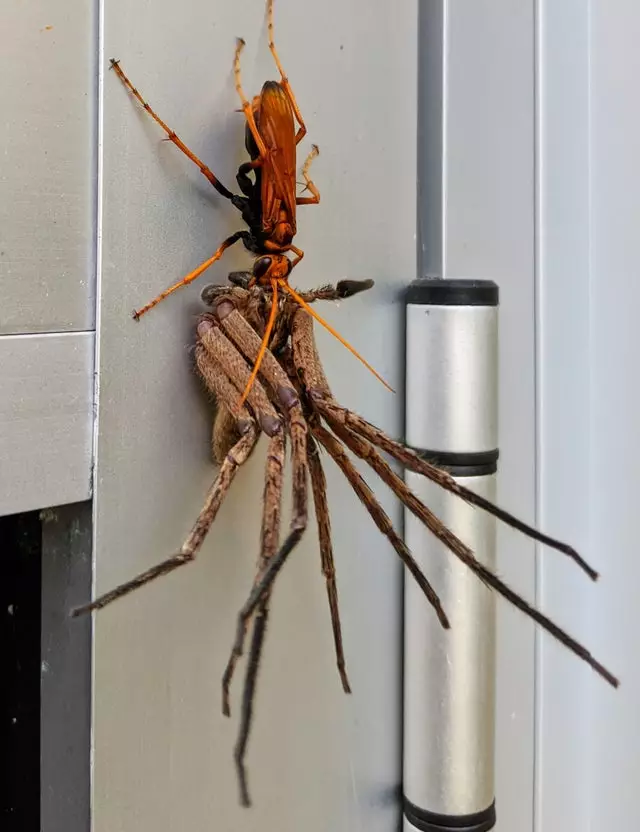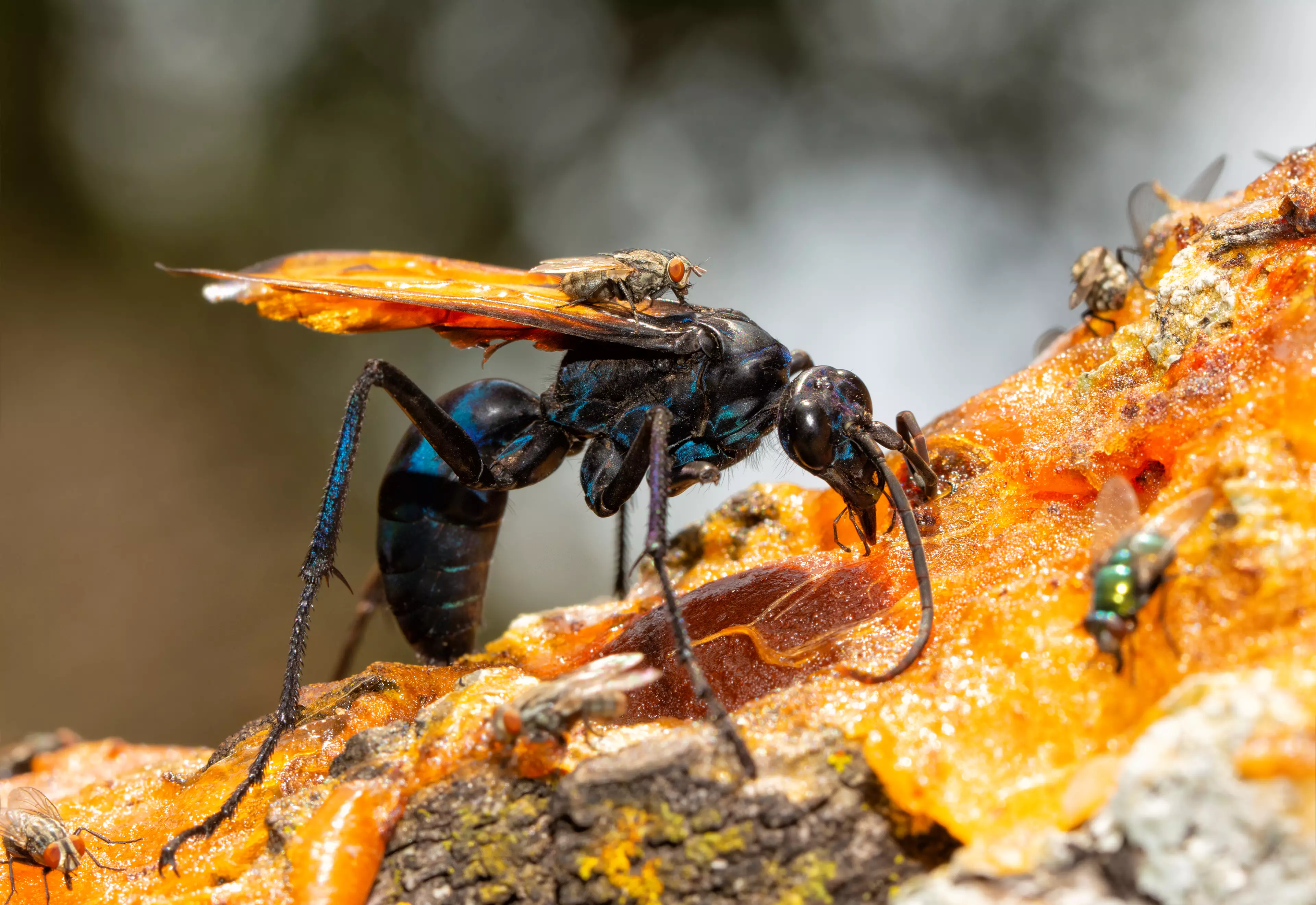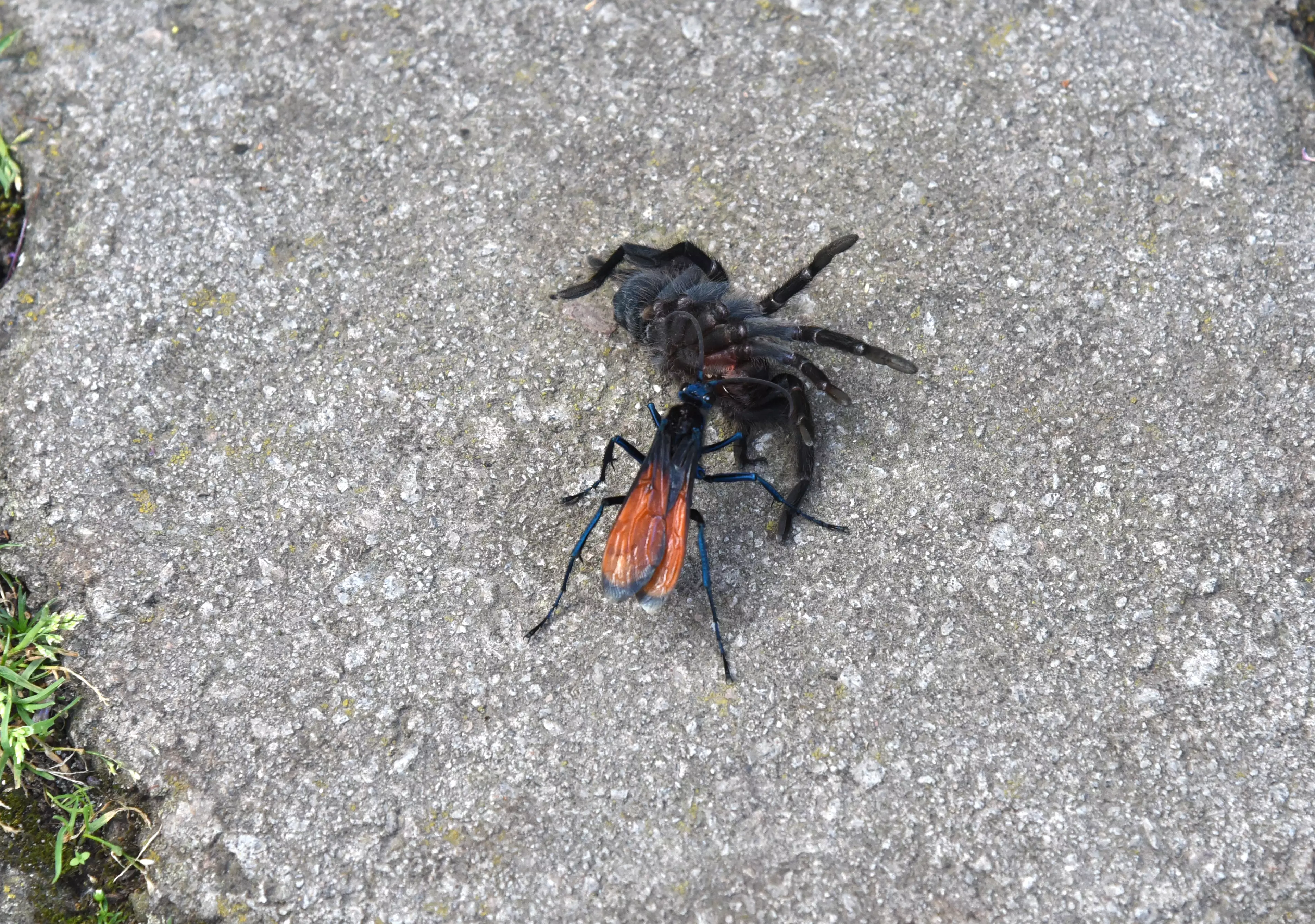
A day spent in the garden in the UK is quite different to a day spent in the garden in Australia. In the UK, you will probably get wet and you might see a ladybird. In Australia, you will probably get a sweat on and you might see a tarantula hawk prey upon a huntsman spider.
One Reddit user witnessed just this in Sydney, sharing a picture of the terrifying spectacle along with the caption: "Got home from work to find this Tarantula Hawk wasp carting off a huntsman spider."
I mean, the spider looks massive and horrible enough and it's the prey.
Advert
But as you may have gathered from the tarantula hawk's name, preying on massive spiders is not out of the ordinary for the creature.

Indeed, while it comes naturally to us to be s*** scared of tarantulas and their massive fangs, it stands to reason that we should be just as scared of the tarantula hawk.
The variety of spider wasp has one of the most painful stings of all insects, and while they generally don't use this agonising weapon without provocation, you will bloody well know about it if you get landed with one.
Advert
It's sting is so tart that entomologist Dr Justin Schmidt - the man behind the Schmidt sting pain index - rates it as a level four, with only the bullet ant ranking as highly in the insect pain game.

The pain from its sting only lasts for around three to five minutes, but it is so intense and excruciating that it leaves people completely debilitated.
Invertebrate biologist Ben Hutchins, of Texas Parks and Wildlife, painted a bleak picture of what you should do if stung by one of the flying demons.
Advert
Speaking to Wired, he said: "There are some vivid descriptions of people getting stung by these things and their recommendation - and this was actually in a peer-reviewed journal - was to just lie down and start screaming, because few if any people could maintain verbal and physical coordination after getting stung by one of these things.
"You're likely to just run off and hurt yourself. So just lie down and start yelling."
That wet UK garden full of ladybirds ain't sounding so shabby now, is it?
Advert
But we shouldn't fear the creatures half as much as tarantulas should; if caught by one of the spider wasps, their fate could hardly be more grim.

The tarantula hawk starts off by stinging the spider between the legs, which paralyses it. They then drag the spider alive to their den and lay an egg on its abdomen. Once the larva hatches, it then begins to feed on the spider, leaving its vital organs until last to keep the prey alive as long as possible.
Eventually, the grown tarantula hawk emerges from the spider and from then on it feeds on flowering plants.
Advert
Whether grown up tarantula hawks - which are essentially vegan - live with a sense of shame stemming from their brutally carnivorous beginnings is unknown; though the smart money says almost definitely not.
Featured Image Credit: Reddit/space_monster